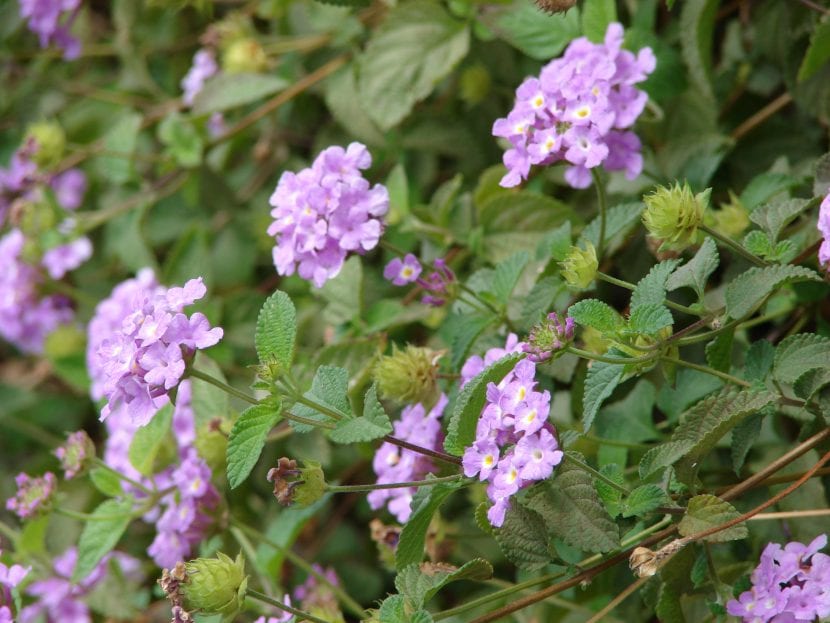
Image - Wikimedia / Forest & Kim Starr
La Lantana montevidensis It is a plant with a creeping habit that you can use as a ground cover in your garden, patio or terrace. Every spring it produces purple flowers that attract a lot of attention. In addition, it does not require a lot of maintenance.
As long as you have electricity and water, we won't have to worry about much else. So if you are looking for a plant that is easy, then I am going to introduce you to this wonderful species.
Origin and characteristics of Lantana montevidensis
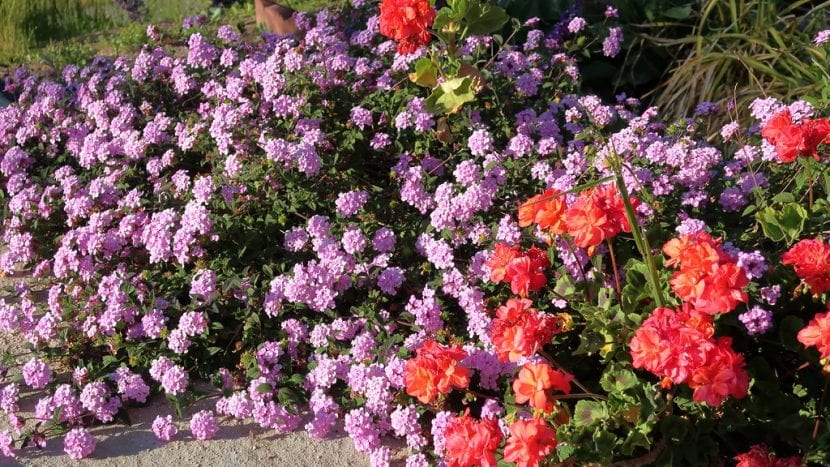
Image - Flickr / cultivar413
Known as creeping lantana, it is an evergreen shrub with a creeping habit native to the subtropical regions of South America. Reaches a height of 30 centimeters and a width of up to 3 meters. Leaves of about 5 centimeters long by about 2 centimeters wide sprout from its stems, with jagged, green margins.
The flowers, which sprout from summer to autumn, are grouped in inflorescences shaped like heads, and are composed of lobed corollas that are about 1 centimeter wide, purple to lavender in color with a white center. The fruit is a small berry that contains one or two seeds.
What are the care you need?
It is a plant with great ornamental interest, so if you would like to know how to take care of it, I will tell you about it below:
Location
La Lantana montevidensis has to be placed outside, in full sun If possible, although it can be in semi-shade if it gives it a few hours of direct light.
Its roots are not invasive, but as we said before it reaches a width of up to 3 meters in the case of having it planted in the ground. Therefore, you should reserve that space for it if you are going to have it in the garden.
Earth
- Garden: grows in all types of soils, but prefers those that are slightly acidic (pH 6-6.5), fertile and well drained. Those that have a strong tendency to compact will need improved drainage (for example, making a 1m x 1m planting hole and mixing that soil with perlite (for here) in equal parts) to avoid problems for the creeping lantana.
- Flower pot: you can fill it with universal substrate (on sale here).
Irrigation
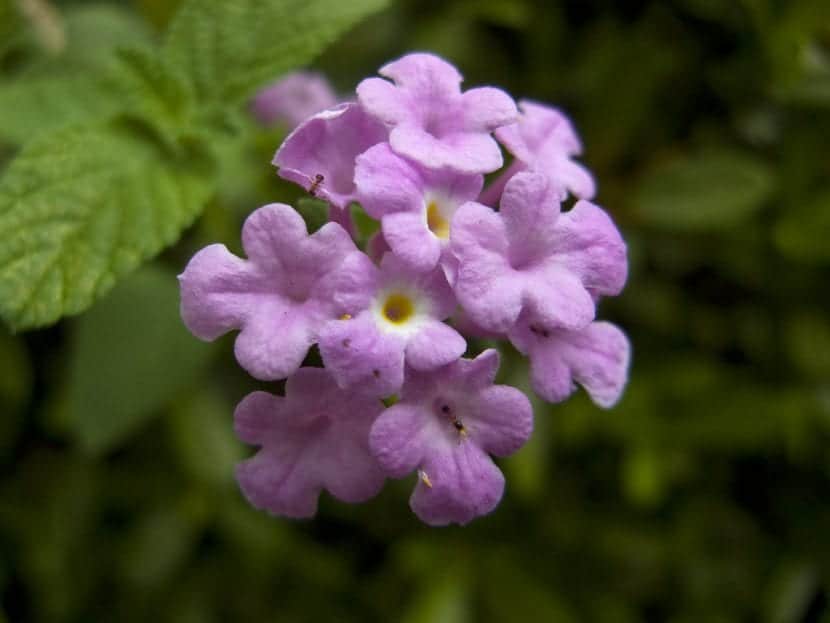
Image - Flickr / dbgg1979
La Lantana montevidensis it resists drought quite well. Even so, it will grow in much better health if it is watered from time to time, moderately in summer and somewhat more scarce the rest of the year.
Depending on the climate and location, you may need 3 or 4 waterings per week during the hottest and dry season, and about 2 per week the rest of the year.
Subscriber
In spring and summer fertilize with organic fertilizers such as guano (for sale here) or mulch, or with compound fertilizers such as universal or for green plants (for sale here). Regardless of what you choose, follow the directions specified on the package to avoid taking risks.
Multiplication
The creeping lantana multiplies by seeds and cuttings in spring, following this step by step:
Seeds
To multiply it by seeds, you first have to fill a seedbed (tray, pot, ...) with universal substrate, and then place them on the surface of said substrate, burying them a little, enough so that they are simply protected from the wind.
Then, water thoroughly, soaking all the soil well, and place the seedbed outside, in semi-shade. In this way, they will germinate in about 15 to 20 days, keeping the substrate moist but not waterlogged.
Cuttings
It is the fastest way, but also the most difficult to obtain new copies. To do this, what is done is to take young branches, impregnate the base with liquid rooting hormones (for sale here) and then plant them in pots with vermiculite (for sale here) previously moistened.
If all goes well, in about 20 days to a month they will root. Place the pot outside, in semi-shade, and keep the substrate moist. To avoid the appearance of fungi, which would spoil the cuttings, it is highly recommended to sprinkle sulfur on vermiculite (for sale here) which is a natural fungicide.
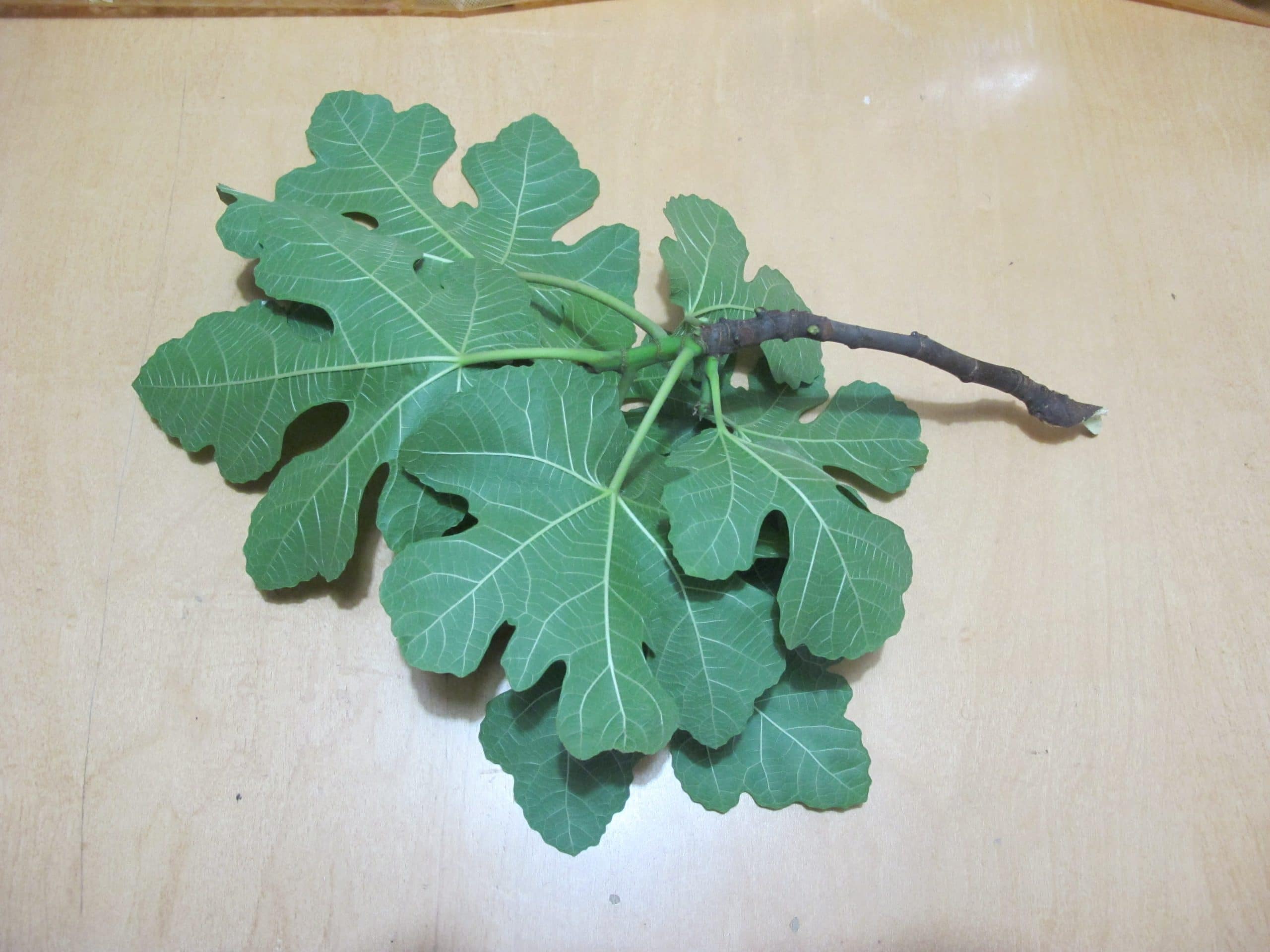
Pruning
Must be pruned in late winter or mid-fall if the climate is mild in order to achieve that the plant has a more compact and orderly appearance, and a greater number of branches that produce flowers.
With this in mind, take a pair of pruning shears and trim the stems by 5-10cm, depending on their length (the longer, the more you can cut). You can take advantage of and remove dry, diseased, weak or broken branches.
Plagues and diseases
It's very tough. Maybe a mealybug, but nothing serious.
Rusticity
Does not like cold or frost too much. The minimum temperature it supports is down to -3 degrees Celsius.
What uses is it given?
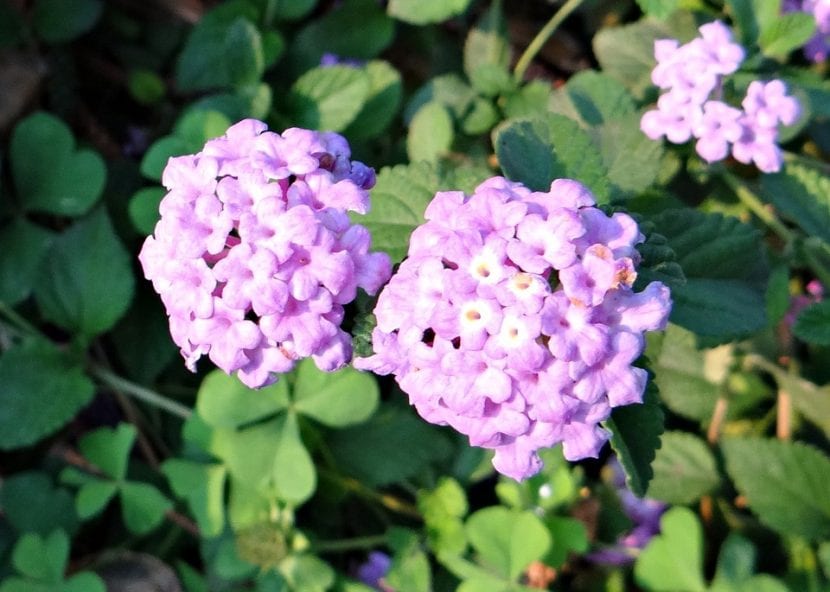
Only as ornamental plant. It is perfect as a floor covering, or low wall covering 😉. It also looks great in hanging pots.
Enjoy it.